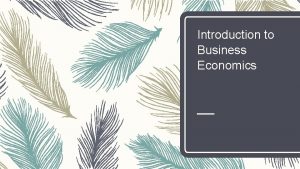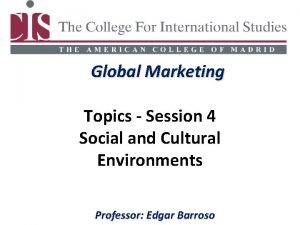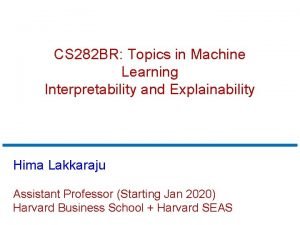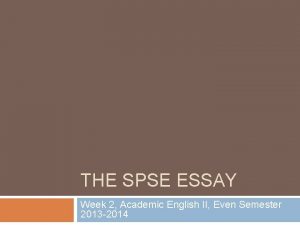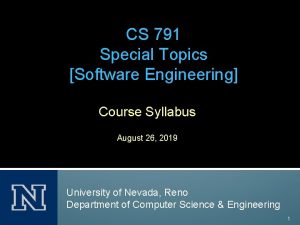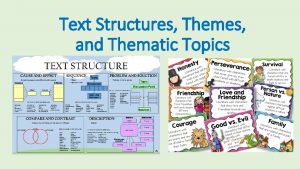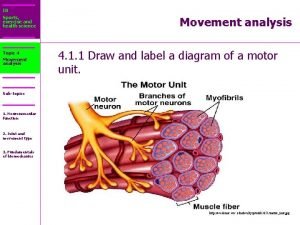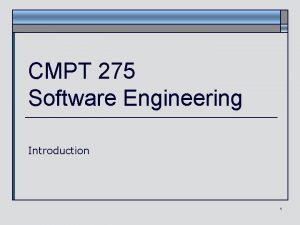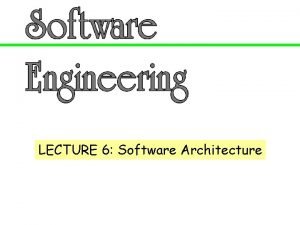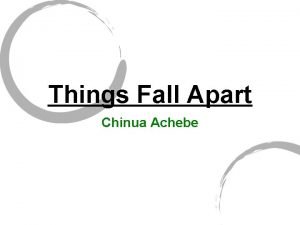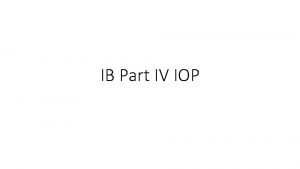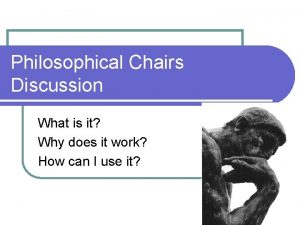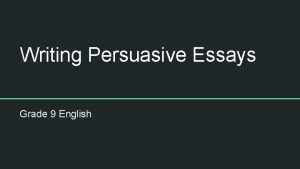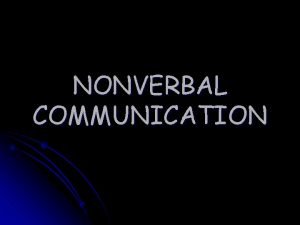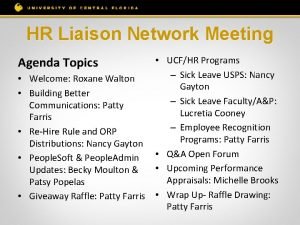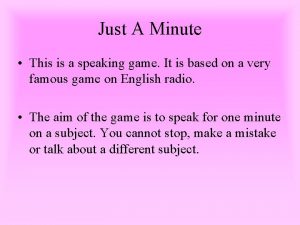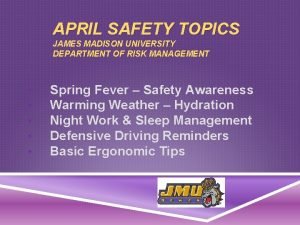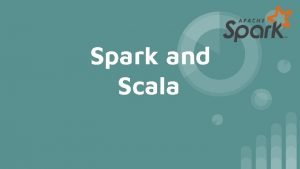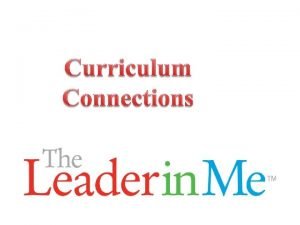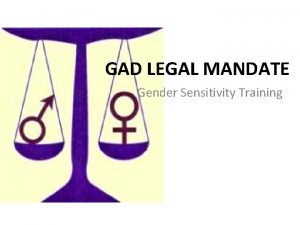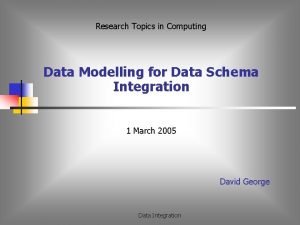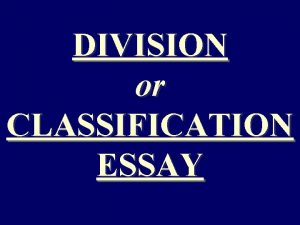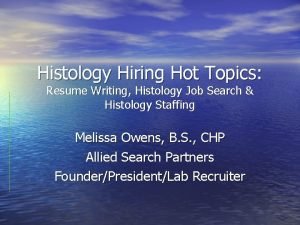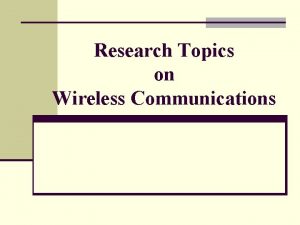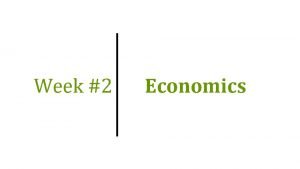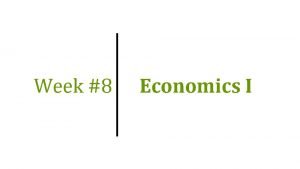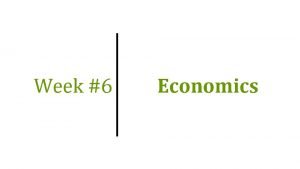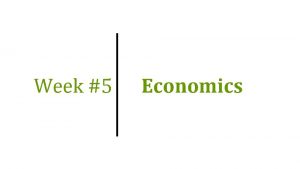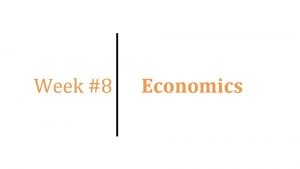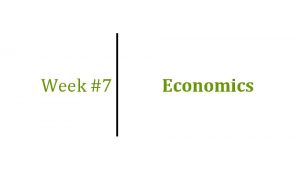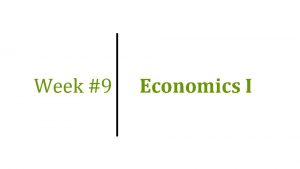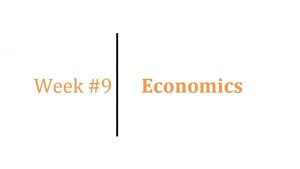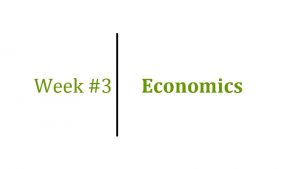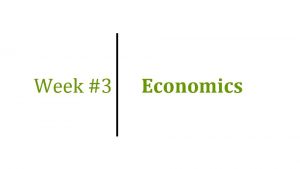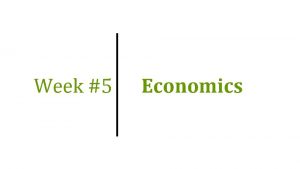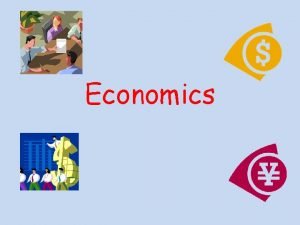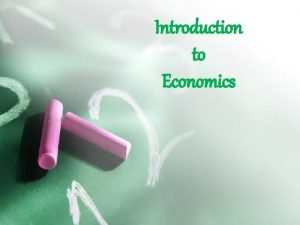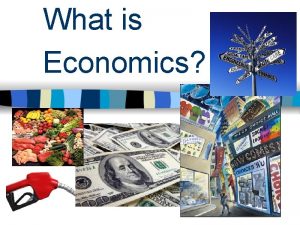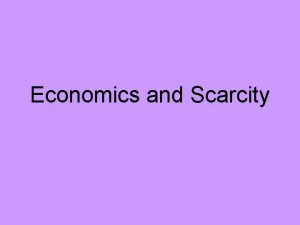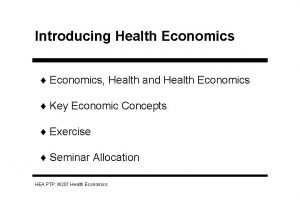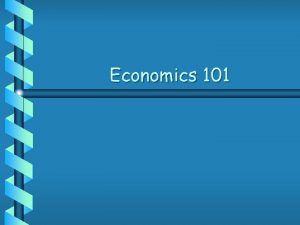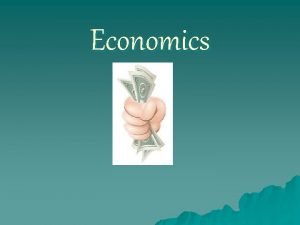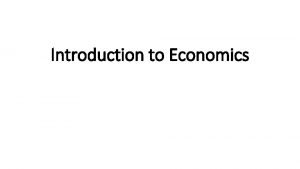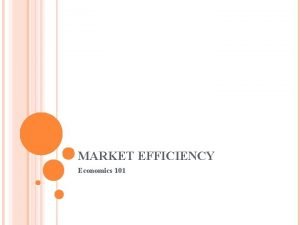Week 1 Economics Topics of Week 1 1



































- Slides: 35

Week #1 Economics

Topics of Week #1 1. 2. 3. 4. 5. 6. 7. 8. Economics Scarcity Microeconomics vs. Macroeconomics Opportunity Cost* Marginal Analysis* Production Possibilities* Process of Production Law of Increasing Cost* "*" Indicates the most important topics. Mateer and Coppock: Chapter #1 and #2

Purpose of This Course • Provide you with the tools to – Discover how the world works – Be an informed citizen – Live your life to the fullest – Understand markets – Make better personal decisions

Economics in Ferris Bueller • "Ferris Bueller" – Here is a stereotypical representation of a "boring" economics class. – Hopefully, you'll enjoy this course a little more.

What is Economics? • Scarcity – The limited nature of society's resources. – Nothing is infinite in nature—not even air and water! • Economics – The study of how people allocate their limited resources to satisfy their nearly unlimited wants. – The study of how people make decisions.

Unlimited Wants? Really? • Which do you prefer? – – $10 or $20? One vehicle or two? One meal a day or three? 200 gigabytes of disk space or 400? • Idea: – More is preferred to less. This leads to unlimited wants. We will generally never say "no" to having more. It doesn't mean we are "greedy" • Question: – How does this relate to scarcity?

Microeconomics vs. Macroeconomics • Microeconomics – Concerned with decisions of individuals, households, and businesses. – What happens to my consumption if I lose my job? – Jim decides to buy a house while the interest rate is low. • Macroeconomics – Looks at the broader economy, including inflation, growth, employment, interest rates, and productivity. – What happens to the economy if there is widespread unemployment? – The Federal Reserve decreases interest rates to spur spending and kick start the economy

Microeconomics vs. Macroeconomics • Microeconomics – Individual units that comprise the economy. • Examples – Individual choosing to take a job in Florida or California – Couple decides to start a family. – Firm choosing to open another factory – Effect of government intervention on a single market

Microeconomics vs. Macroeconomics • Macroeconomics – The study of the broader economy • Examples – Inflation – Economic growth and productivity – Unemployment – Interest rates – Aggregate demand supply

The Five Foundations of Economics 1. 2. 3. 4. 5. Incentives matter Life is about trade-offs Opportunity costs Marginal thinking Trade creates value * We will focus on #3 - #5.

Opportunity Cost • Opportunity Cost – The highest-valued alternative that must be sacrificed in order to get something else. – Not all alternatives, just the next best choice. • In economics: – The cost of something is what you give up to get it. Scarcity Choice Opportunity Cost

Opportunity Cost • Easy example: go to the mall or the pool? – Opportunity cost of going to the mall: • Lost opportunity to go to the pool. – Opportunity cost of going to the pool: • Lost opportunity to go to the mall. – Decision-making key: • Minimize opportunity cost by selecting the option that has the largest benefit. Go to whichever you enjoy more, the pool or mall. • Another example – A business makes a profit. That's great! – However, could it have made MORE profit producing something else? This is the economical way of thinking.

Marginal Thinking (Analysis) • Economic thinking – Systematically evaluating a course of action. – Requires a purposeful evaluation of available opportunities to make the best decision. • Marginal thinking – Evaluate whether the benefit of one more unit of something is greater than the cost. – Margin examples: one more unit (slice of pizza), one more hour of activity (studying, sleeping).

Marginal Thinking Example • Suppose you are vacuuming your living room. Will you move the couch and china cabinet to vacuum underneath them? • Marginal benefits – A small additional amount of carpet is cleaned. • Marginal costs – Vacuuming now takes more time and effort. • Cost-benefit analysis at the margin – Do the action (move furniture) only if the marginal benefits are greater than the marginal costs. – Depends on your valuation of the clean room and the time and effort it takes you to move the furniture.

Is Going to College Worth It? • Let's examine a college education using opportunity costs and marginal thinking. • We often hear people (especially politicians!) say phrases like the following: – College graduates earn $1 million more in their lifetimes than high school grads. – Everyone should go to college. – College will benefit everyone. – We expect all our nation's children to go to college.

Is Going to College Worth It? Yearly Earnings Z A = College B = High school • X = direct costs of college • Y = opportunity cost of not working while in college • Z = college premium; extra Age money earned. Y 0 X 18 22 In terms of X, Y, and Z, go to college if: Z>X+Y *Go to college if marginal benefits are greater than marginal costs!

Caveat • Difficult question: – Are the benefits of college greater than the costs of college for everybody? – Think about this: some may have big direct costs or opportunity costs; others will have a small benefit. • Answer: – If the answer to the previous question is "no, " then not everyone should go to college. – Economists would disagree with such blanket statements as "everyone will benefit from a college education. "

Caveat • Please check Lecture Notes Week #1 for Marginal Analysis section. • Marginal Benefit vs Total Benefit • Marginal Cost vs Total Cost • Net Gain • Rational Behavior

Practice What You Know What can be said about scarcity? A. B. C. D. Scarcity forces us to make choices. Scarcity doesn't affect the super-wealthy. Scarcity only affects commodities such as oil. Scarcity generally doesn't affect our day-to-day living.

Practice What You Know The opportunity cost of buying a good is A. the sum of values of all the other goods you could have purchased. B. the value of the next-best alternative you could have purchased. C. irrelevant since you will purchase your highest-valued good. D. the average of values of all the other goods you could have purchased.

Practice What You Know With regards to marginal thinking, an individual will do an action if A. B. C. D. the probability of success is greater than 50%. the action has positive benefits. the costs of the action are small. marginal benefits ≥ marginal costs.

Practice What You Know The governor decides to increase funding for education. However, this will mean decreasing funding for infrastructure. This situation illustrates A. B. C. D. trade-offs. comparative advantage. incentives. markets.

The Economy • The ECONOMY is the mechanism through which resource use is organized to satisfy the desires of people living together in a society. • In any economy decisions must be made to determine: – 1. WHAT will be produced – 2. HOW will it be produced – 3. TO WHOM will it be distributed

The Process of Production Inputs Labor Capital Natural resources Production Outputs Technology Goods and Services 1 st St. Entrepreneurship

Economic Models • Economists use models to understand the complex real-world economy. • Models – Simplified versions of reality – Built with some assumptions – Are considered good if they predict accurately.

Economic Models • An economic model is a means of explaining how a sector of the economy functions. • Models consist of: – 1. Economic Variables – 2. Assumptions – 3. Implications • Economic models are abstractions that use logic to establish cause-and-effect relationships among economic variables.

Economic Models • Ceteris paribus – Latin: "other things being equal" – Assumption in which we examine a change in one variable, but hold all other variables constant. – Allows us to isolate the effect of a single variable.

Production Possibilities Frontier • Production possibilities frontier – Combinations of outputs that a society can produce if all of its resources are being used efficiently. • Assumptions of this model – Technology fixed – Resources fixed – Simplified two-good analysis

Production Possibilities Frontier

Production Possibilities Frontier • Why is the PPF downward-sloping? – Must give up one good to increase production of another. • Why are we unable to produce certain combinations? – Scarcity and limited resources • Efficient points – Points ON the PPF (A, B, C, and D) • Inefficient points – Points INSIDE the PPF (F) – Workers goofing off, unused buildings • Unattainable (for now) points – Points OUTSIDE the PPF (E)

PPF and Opportunity Cost • Recall opportunity cost – Highest-valued alternative – What we give up as a result of an action • Opportunity cost in this case is the slope of the PPF: Opportunity Cost of what? – Opportunity cost of producing wings or pizzas? • How do we calculate slope? – What is the slope in this example? – Is it changing or constant?

PPF and Opportunity Cost Nonlinear PPFs • We can draw a more realistic PPF by making it nonlinear and "bowed outward. " – The PPF will not have a constant slope in this case. – The slope will get steeper as we move from left to right, and opportunity costs will not be constant. • Law of increasing relative cost – Refers to the increasing opportunity cost of production that occurs as you move along the production. – As we produce more of good A, we have to give up increasingly larger amounts of good B.

PPF and Opportunity Cost Nonlinear PPFs • Intuition of nonlinear PFFs – Inputs (resources) are not perfectly homogenous. – Some inputs are better at making pizza than other inputs. – As we expand pizza production, we'll use the inputs that are the best (Italian chef, dough-tossing master). – If we keep expanding production, we'll have to start using inputs that aren't as good at making pizza. They'll still be doing their best, but they won't make as much pizza as other inputs. – Pizza production doesn't expand at a linear rate!

PPF and Opportunity Cost Nonlinear PPFs

Sources • "Principles of Economics with Smartwork Access (ISBN: 978 -0 -26314 -5), 1 st Edition, 2013" by Mateer and Coppock • "Economics: Custom Edition for NCSU (ISBN: 9781937435202" by David Hyman
 Business economics topics
Business economics topics Mathematical vs non mathematical economics
Mathematical vs non mathematical economics Maastricht university economics and business economics
Maastricht university economics and business economics Week by week plans for documenting children's development
Week by week plans for documenting children's development Global marketing topics
Global marketing topics Hima lakkaraju
Hima lakkaraju Spse structure example
Spse structure example Special topics in software engineering
Special topics in software engineering What is a thematic topic
What is a thematic topic Ib sports, exercise and health science topics
Ib sports, exercise and health science topics Software engineering important topics
Software engineering important topics Vts-0fxyt-e -site:youtube.com
Vts-0fxyt-e -site:youtube.com Topics in things fall apart
Topics in things fall apart Uil extemp topics
Uil extemp topics Engineering meeting topics
Engineering meeting topics Individual oral presentation topics
Individual oral presentation topics Topics for philosophical chairs
Topics for philosophical chairs Android advanced topics
Android advanced topics English persuasive essay
English persuasive essay Individulist
Individulist Patty farris
Patty farris Just a minute game topics
Just a minute game topics Bondservants motorcycle
Bondservants motorcycle Scala topics
Scala topics Safety topics for august
Safety topics for august Sociolinguistics topics
Sociolinguistics topics Gad laws and mandates
Gad laws and mandates Data warehouse research topics
Data warehouse research topics Classification and division essay
Classification and division essay Histology jobs
Histology jobs Business ethics presentation
Business ethics presentation Bad news letter topics
Bad news letter topics Army decision brief example
Army decision brief example Group discussion tips in tamil
Group discussion tips in tamil Safety topics for spring
Safety topics for spring Wireless communication research topics
Wireless communication research topics
